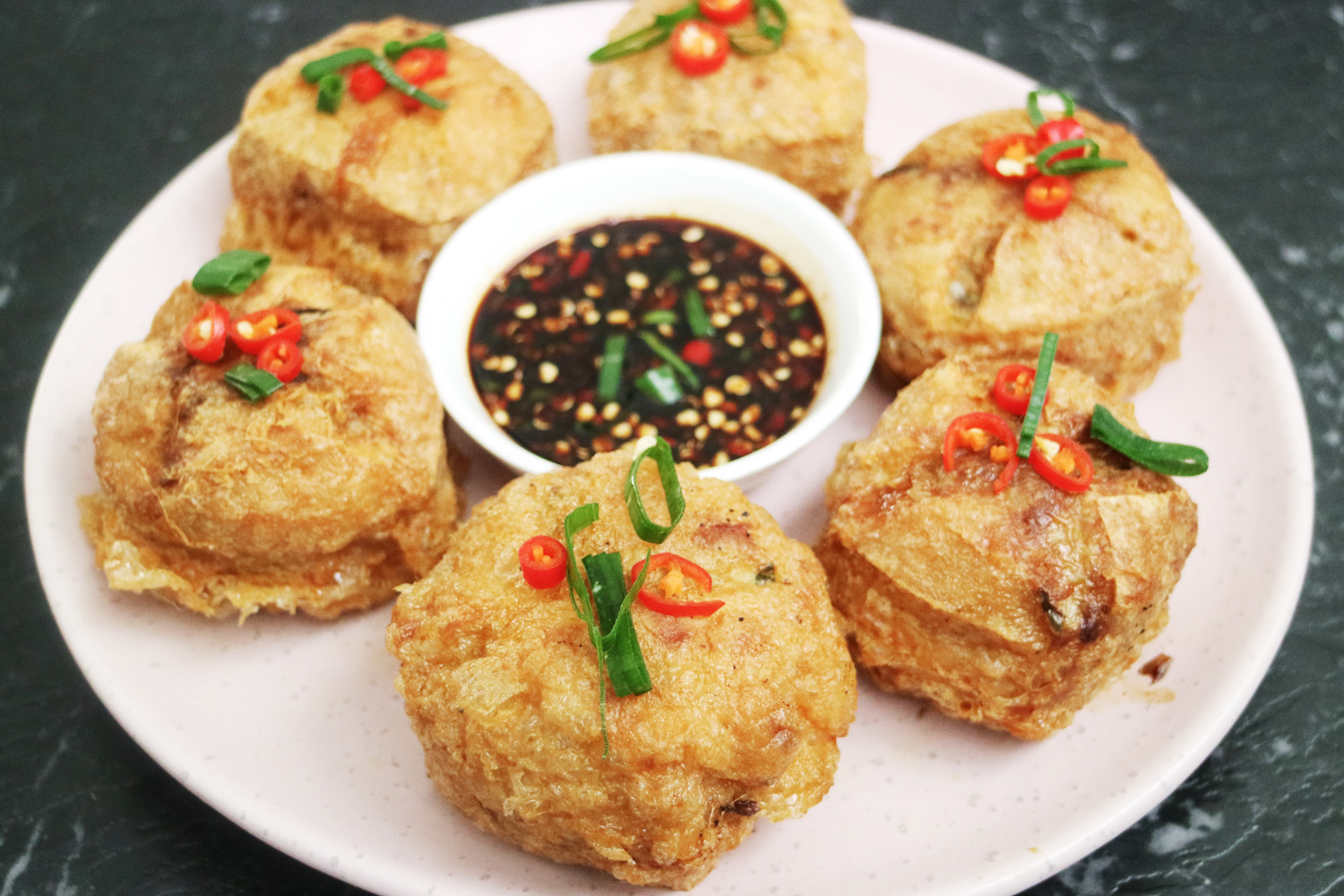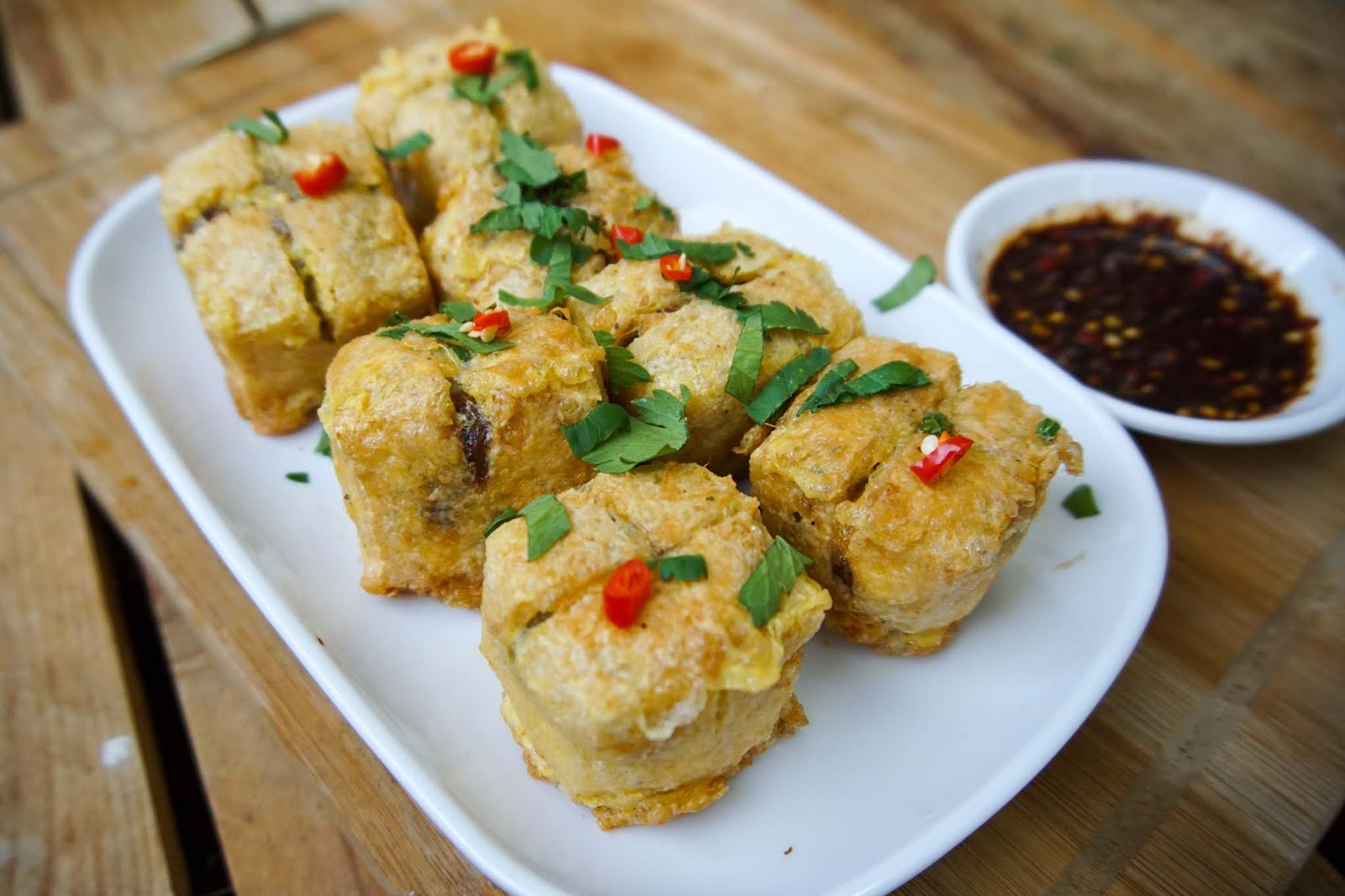Immerse yourself in the vibrant tapestry of Southeast Asian cuisine with tauhu begedil, a delectable dish that tantalizes taste buds and holds deep cultural significance. Originating in Malaysia and Indonesia, these golden-brown fritters are a staple at gatherings, offering a harmonious blend of flavors and textures that will leave you craving for more.
Whether you’re a seasoned culinary enthusiast or a novice eager to explore new horizons, this comprehensive guide will provide you with everything you need to master the art of crafting tauhu begedil. From the essential ingredients to step-by-step instructions, variations, and its cultural impact, we’ve got you covered.
So, gather your ingredients, don your apron, and embark on a culinary journey that will ignite your senses and leave a lasting impression.
Introduction
Tauhu begedil, also known as tofu patties or beancurd cutlets, is a popular dish in Southeast Asia, particularly in Malaysia and Indonesia. It is a delectable appetizer or side dish made from mashed tofu, vegetables, and spices.
The origins of tauhu begedil can be traced back to the early Chinese immigrants who brought their culinary traditions to the region. Over time, the dish evolved to incorporate local ingredients and flavors, becoming a beloved delicacy in its own right.
Cultural Significance
Tauhu begedil holds cultural significance in Southeast Asia, especially during festive occasions and gatherings. It is often served as part of a buffet spread or as a snack during tea time. The dish is also associated with family gatherings and celebrations, as it is a simple yet satisfying treat that brings people together.
Ingredients and Preparation
Making tauhu begedil is a straightforward process that requires minimal effort. Let’s explore the necessary ingredients and step-by-step instructions to create this delicious dish.
Ingredients
The following table lists the ingredients required for tauhu begedil:
| Ingredient | Quantity | Measurement | Notes |
|---|---|---|---|
| Tofu | 2 | Blocks | Firm or extra-firm |
| Potato | 2 | Medium | Boiled and mashed |
| Carrots | 1 | Medium | Finely chopped |
| Onion | 1 | Medium | Finely chopped |
| Garlic | 2 | Cloves | Minced |
| Ginger | 1 | Thumb | Minced |
| Green chili | 1-2 | To taste | Finely chopped |
| Coriander leaves | 1/2 | Cup | Chopped |
| Turmeric powder | 1 | Teaspoon | |
| Cumin powder | 1 | Teaspoon | |
| Salt | To taste | ||
| Breadcrumbs | 1/2 | Cup | For coating |
| Vegetable oil | For frying |
Preparation
Once the ingredients are gathered, follow these steps to prepare tauhu begedil:
- In a large bowl, mash the tofu until it resembles coarse crumbs. Add the mashed potato, chopped carrots, onion, garlic, ginger, green chili, coriander leaves, turmeric powder, cumin powder, and salt to the tofu. Mix well to combine.
- Form the mixture into small patties, about 2 inches in diameter and 1/2 inch thick. Dip each patty in breadcrumbs to coat evenly.
- Heat a shallow pan with enough vegetable oil to shallow fry. Once the oil is hot, carefully place the patties in the pan and fry until golden brown on both sides.
- Remove the fried patties from the pan and drain them on paper towels to remove excess oil.
- Serve the tauhu begedil hot with your favorite dipping sauce.
Tips and Techniques:
- For a crispier exterior, double-coat the patties in breadcrumbs.
- To reduce the amount of oil absorbed by the patties, fry them over medium heat.
- If you don’t have breadcrumbs, you can use crushed crackers or cornflakes as a substitute.
Variations and Adaptations
Tauhu begedil is a versatile dish that can be easily adapted to suit different tastes and dietary restrictions. Here are some variations and adaptations to consider:
Variations in Ingredients
The main ingredients in tauhu begedil are tofu, beans, and vegetables. However, you can experiment with different types of beans and vegetables to create unique flavor combinations.
- Beans: Instead of using black-eyed peas, try using kidney beans, chickpeas, or lentils.
- Vegetables: Add grated carrots, zucchini, or bell peppers for extra color and crunch.
Dietary Adaptations
Tauhu begedil can be adapted to accommodate various dietary restrictions:
- Vegan: Use vegan tofu and vegetable broth instead of chicken broth.
- Gluten-free: Replace the bread crumbs with gluten-free breadcrumbs or almond flour.
- Low-carb: Reduce the amount of breadcrumbs and use more vegetables.
Creative Presentation
Tauhu begedil can be served in a variety of creative ways:
- Sliders: Serve tauhu begedil on slider buns with your favorite toppings.
- Spring rolls: Wrap tauhu begedil in rice paper wrappers with fresh vegetables.
- Tacos: Fill corn or flour tortillas with tauhu begedil, salsa, and guacamole.
Nutritional Value and Health Benefits

Tauhu begedil is a nutritious dish that offers a range of health benefits. It is a good source of protein, fiber, and essential vitamins and minerals.
The protein in tauhu begedil helps to build and repair tissues, while the fiber helps to keep you feeling full and satisfied. The vitamins and minerals in tauhu begedil, such as iron, calcium, and potassium, are essential for maintaining good health.
Health Benefits
- Consuming tauhu begedil can help to lower cholesterol levels.
- The fiber in tauhu begedil can help to regulate blood sugar levels.
- Tauhu begedil is a good source of antioxidants, which can help to protect your cells from damage.
- The protein in tauhu begedil can help to boost your immune system.
Potential Allergens
Tauhu begedil is made with soybeans, which are a common allergen. If you are allergic to soybeans, you should avoid eating tauhu begedil.
Cultural Significance and Social Impact
Tauhu begedil holds a significant place in the culinary traditions of various communities. It is a staple dish in many social gatherings and celebrations, symbolizing unity and togetherness.
In Indonesia, tauhu begedil is known as perkedel and is often served at weddings, birthdays, and religious festivals. It represents prosperity and abundance, as the round shape resembles coins.
Social Gatherings
Tauhu begedil is a popular dish for potlucks, picnics, and family gatherings. Its versatility and affordability make it a crowd-pleaser, enjoyed by people of all ages and backgrounds.
In Malaysia, tauhu begedil is often served as a side dish with nasi lemak, a traditional rice dish. It is also a common street food, sold by vendors at night markets and food stalls.
Celebrations
Tauhu begedil is an essential dish during festive occasions. In Chinese culture, it is a symbol of good fortune and prosperity. During the Lunar New Year, tauhu begedil is served as part of the traditional feast, representing wealth and abundance.
In India, tauhu begedil is known as pakoras and is a popular snack during Diwali, the festival of lights. It represents victory over darkness and brings joy and happiness to the occasion.
Anecdotes and Stories
The cultural significance of tauhu begedil is reflected in numerous anecdotes and stories passed down through generations.
In Indonesia, it is believed that a well-made tauhu begedil can bring good luck to a household. In one tale, a family who had been struggling financially experienced a sudden turn of fortune after serving tauhu begedil at a special gathering.
In Malaysia, tauhu begedil is often used as a symbol of unity. During the country’s independence celebrations, tauhu begedil is distributed to attendees as a reminder of the nation’s shared history and culture.
Final Summary

As you savor the delectable tauhu begedil, let its flavors transport you to the bustling streets of Southeast Asia, where it has been a cherished part of culinary traditions for generations. Whether you choose to indulge in its classic form or experiment with creative variations, this dish is sure to become a beloved staple in your kitchen.
So, continue experimenting, share your culinary creations with loved ones, and embrace the joy of cooking and sharing this timeless delicacy.
Answers to Common Questions
What is the key ingredient in tauhu begedil?
Tofu, also known as tauhu, forms the heart of tauhu begedil, providing a soft and absorbent base for the flavorful blend of spices and aromatics.
Can I substitute other beans or vegetables in the recipe?
Absolutely! Feel free to experiment with different beans, such as black beans or kidney beans, or incorporate vegetables like carrots, bell peppers, or corn for added texture and nutritional value.
How can I make tauhu begedil gluten-free?
To create a gluten-free version, simply replace the wheat flour with gluten-free flour, such as almond flour or coconut flour, and ensure that all other ingredients used are also gluten-free.
